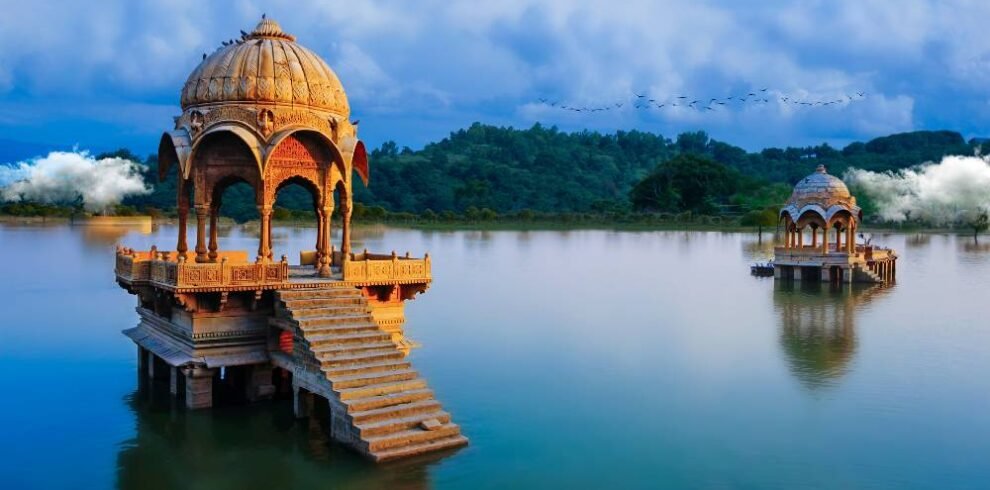Rajasthan: the area of vivid colors and wealthy traditions. This awesome land is home to more than simply lovely palaces and wide deserts. It is an absolute gold mine of different dance patterns that narrate the tale of its colorful lifestyle. In this weblog, we will explore the fascinating world of people and classical, and conventional dances that beautify Rajasthan’s landscapes. Every dance form tells an extraordinary story with the aid of fusing customs, traditions, and the people’s spirit.
Folk Dances of Rajasthan

Rajasthan’s conventional dances are like live examples of the nation’s cultural values. These conventional performances attract the audience with their bright costumes and rhythmic beats. It will become clear that those dances are expressions of the community’s individual values as opposed to honest pieces of art.
- Ghoomar: Among all Rajasthani folk dances, ghoomar might be the most famous dance form. Women dance stunningly, twirling in circles while carrying colorful ghagras, or long skirts. During galas and auspicious occasions, Rajasthani women often perform the dance, showcasing their grace and beauty.
- Kalbelia: The Kalbelia tribe performs the Kalbelia dance as a tribute to Rajasthan’s nomadic gypsies. The dancers mimic the actions of snakes with specific footwork and sleek frame shapes. The traditional musical tool, the been, adds adorable rhythmic sounds to this thrilling overall performance.
- Chari: The Mewar region gave the beginning to the Chari Dance, which celebrates the talent of balancing. Dancers do complex dance steps even carrying brass pots (charis) on their heads which are full of lit lamps. This traditional dance is often connected to ceremonies and rituals.
- Rajasthani Khyal: Rajasthani Khyal is a stylish and expressive artwork form that is a people dance with robust roots in everyday lifestyles. Dancers tell testimonies of affection, pleasure, and normal activities with rhythmic footwork and gestures and dressed in traditional attire. This simple yet significant dancing style connects viewers with traditions. This can have an effect on their lives by performing as a replica of Rajasthan’s subtle cultural variations.
Read also :- Local Festivals to celebrate in Rajasthan | 25 Honeymoon Places in Rajasthan
Classical Dance of Rajasthan
Folk dances portray the day-to-day lives of human beings, while Rajasthani classical dances derive from centuries-old traditions and have a more suggested and subtle form.
- Kathak: Rajasthan has extensively stimulated Kathak, a classical dance form. It is famous for its delicate footwork, short spins, and emotional narration. Rajasthani kathak often combines regional ingredients to create a one-of-a-kind combo that honors the nation’s cultural range.
- Bhawai: Bhawai is essentially a traditional dance, although it additionally has elements of classical dance. Dancers do small, precise actions while balancing numerous brass pitchers or earthen pots on their heads. Grace and accuracy must complete Bhawai, making it resemble classical dance in a few methods.
Traditional Dance of Rajasthan
Rajasthan’s conventional dances have their origins in the rituals and traditions of the various groups who call the state home.
- Terah Taali: The Kamad people perform a conventional dance called Terah Taali. While chanting devotional songs. Dancers take a seat on the floor and play the manjeeras (cymbals) rhythmically. The correct moves of the foot and coordinated clapping produce a wonderful visual and audio enjoyment.
- Gair: The Gair dance is a traditional act that people often see at festivals and galas, where men in colorful costumes create an enthralling display while going with the flow inside and outside of concentric circles. The dance is an essential factor of Rajasthan’s cultural legacy and represents the circle of lifestyles.
Click This :- Rajasthan Tour Package
Other Rajasthani Dance Forms

- Tamasha: Tamasha, which is interpreted as “leisure” in Hindi, is a colorful folk dance that blends active moves with narrative. Performers, who’re regularly from the Jat and Gujar communities, tell stories about historical occasions or current societal troubles through the use of expressive gestures and footwork. Tamasha shows the diversity of Rajasthan’s ancient arts with the aid of supplying a forum for amusement as well as social commentary.
- Fire Dance: An interesting and risky overall performance, fire dance is normally linked to the Meena tribe. Dancers create a charming display of movement and handle everything by carefully controlling burning torches. Fire Dance has cultural significance beyond its aesthetic appeal. It represents pure and a religious connection. It expands the range of Rajasthani traditional dances by introducing a hint of thriller.
- Kachhi Ghodi: Shekhawati’s colorful and energetic dance style, Kachhi Ghodi, brings the legends of the region’s warriors to life. Dancers dressed as horse riders create an exciting atmosphere as they circulate rapidly to the rhythms of traditional tunes. Rajasthan’s martial traditions captivatingly express themselves in Kachhi Ghodi, with its rhythmic motion and energetic gestures.
- Maand: Maand dance captures Rajasthan’s soul as it originates in the Marwar district. The performers dance to the sweet melodies of traditional Maand music using lovely, relaxed motions. This dancing style, which is frequently visible at social events and weddings, is a transferring mirrored image of the iconic cultural richness embedded in Rajasthani customs.
Conclusion
The dance tradition of Rajasthan bears witness to the rich cultural heritage that has evolved over the years. The dancers reflect the uniqueness and identity of Rajasthani in all forms of dance, whether it be the vibrant and lively folk dances, the grand classical Kathak, or the deeply rooted classical forms. They carry on the tradition of a place where each step narrates a story while they dance to old songs. Each event reflects a living and timeless tradition.
FAQs
- How many dance forms are there in Rajasthan?
Rajasthan is home to a wide variety of ancient dance genres and has a rich cultural tapestry. Although it’s difficult to identify an exact number because new variants and regional varieties can appear eventually. The state is home to a number of popular and extensively practiced dance styles.
- What are the various dance festivals of Rajasthan?
There are some of the notable dance festivals such as Jaipur Kathak Samaroh, Rajasthan International Folk Festival, Elephant festival Jaipur, Udaipur World Music festival, Pushkar Camel fair, Mewar festival, Gangaur festival, Desert festival Jaisalmer, etc.
- What is the popular dance and language of rajasthan?
In Rajasthan, the popular dance is Ghoomar and the primary language of rajasthan in Rajasthani with different dialects like Marwari, Mewari, and Dhundhari.






